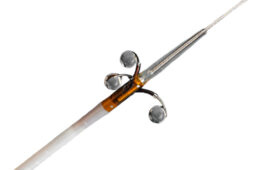
To avoid unnecessary delays and gain speed to market through “right the first time” regulatory submissions for a combination product, sponsor companies must understand the various pathways for which a combination product can travel.
Editor’s Note: This article is written by Winston Brown, VP of Global Quality & Regulatory Affairs at Phillips-Medisize.
The drug-device combination product market is growing at a rapid pace. By 2019, it is expected that the global market for drug device combination products will reach $115.1 billion. This is nearly double its worth from $66 billion back in 2012.
This burgeoning market will likely bring in a flood of product submission applications to the FDA at a time when resources are already strained. To avoid unnecessary delays and gain speed to market through “right the first time” regulatory submissions for a combination product, sponsor companies must understand the various pathways for which a combination product can travel.
In addition, companies must also understand their own products enough to be able to discern what specific regulatory path it would follow. This not only preserves the relationship among sponsors and regulators, but it also ensures safe and effective medical treatments reach patients in a timely manner.
Determining your product’s regulatory pathway
A combination product is defined as a product that is comprised of any combination of a drug and a device; a biological product and a device; a drug and a biological product; or a drug, device, and a biological product.
Based on the type of combination product a sponsor is pursuing, the regulatory pathway can go through one of three primary review jurisdictions: the Center for Devices and Radiological Health (CDRH), the Center for Drug Evaluation and Research (CDER), or the Center for Biologics Evaluation and Research (CBER). This assignment is based on a determination of the combination product’s Primary Mode of Action (PMOA), which is a critical piece of the regulatory puzzle.
While a product could feasibly have more than one mode of action, which is how it achieves its intended therapeutic effect or action, the FDA wants the sponsor company to define the single-most important (or) primary mode of action. This key piece of information determines the product’s regulatory pathway, and allows the sponsor to begin the process of submitting its drug device combination product for approval.
Should the wrong PMOA be identified, the application may be delayed by the Office of Combination Products (OCP). The delays could be in the form of not going to the correct review jurisdiction, eliciting questions back from the reviewing agency that will need to be answered by the sponsor, or a combination thereof.
Companies that know their products well or have a product that is comparable to a proven drug product already on the market may file a 503(b), which allows them to take an abbreviated product regulatory pathway for drugs. However, in cases where a PMOA cannot be defined with certainty, the sponsor should seek assistance from an experienced retained consultant and the OCP.
When in doubt, turn to OCP
In 2002, the Medical Device User Fee and Modernization Act (MDUFA) was created to address capacity and performance issues with the FDA’s medical device program. One major issue was the critical shortage of the program’s resources and how that shortage was affecting its ability to effectively regulate combination products.
Among the efforts put forth by MDUFA to remedy this was to establish the OCP, an industry resource that could offer clarity and guidance around the regulatory pathway for combination products. Today, the OCP is considered a beacon for combination product issues and a valuable asset to the drug-device combination product market.
To provide some general perspective as to the volume of workload OCP handles, from FY 2009-2014, 1,800+ combination product applications were submitted for review. These applications were spread out fairly evenly among each year.
However, separate from the applications, the OCP’s requests for review also rose significantly during that timeframe. In 2009, the office received 455 requests for review from applicants as opposed to over 1,000 requests received later in 2014, representing a significant increase of 72%.
One of the primary responsibilities of the OCP is to assign the appropriate review jurisdiction to a sponsor’s combination product, through the sponsor company filing for a Request for Designation (RFD). It is important to note that the OCP establishes policy and guidance specific to combination products, but does not review the actual products for safety, effectiveness, efficacy, superiority claims and like criteria.
The latter is the job of the actual reviewing office whereby the product is actually assigned by OCP. In the FDA guidance document, “How to Write a Request for Designation,” the agency outlines all of the information necessary to file the RFD.
This includes the PMOA for each constituent of the product as well as the PMOA for the overall combination product “system.” Other useful resources can be found on the OCP website, such as Capsular Descriptions of Jurisdictional Determinations, which provides pre-decisions for jurisdictional review for certain types of products.
Some of the factors OCP will consider when reviewing the RFD are:
- Why would the product be used?
- How does the product work?
- If any preliminary, pre-clinical exploratory studies have been done, what data is available?
- What is the intended use of the product, based on advertising and promotional materials?
- Are there any precedents currently on the market or pending final approval? (If it’s a first-in-kind product, there may not be.)
- What safety and effectiveness issues are raised because of the uniqueness of the product?
A sponsor should anticipate these questions when going through the early-stage development process, in order to have a firm grasp on the answers prior to filing. Without doing so, the process of completing the RFD could be delayed or the company could face these questions later on from the OCP.
Once the RFD has been submitted, the OCP responds within five calendar days to indicate whether or not additional information is needed. If there are questions, a sponsor may receive an inquiry from the OCP. Inquiries or questions should be answered as quickly and completely as possible, so as not to delay the process. The OCP then has 60 calendar days to respond back to the sponsor company regarding next steps.
If the OCP is not able to make a determination of the product PMOA (or) cannot do it with certainty, the PMOA will then be determined based on the agency algorithm. If the algorithm is applied, the OCP first attempts to determine which of its offices has the most experience with similar products that present the same questions of safety and efficacy. If so, the sponsor’s combination product is assigned to the same office as that product.
If OCP is unable to identify a similar product, then the sponsor’s product is assigned to the office with the most expertise related to the most significant safety and effectiveness questions presented by the combination product. There are several other factors relevant to the application of the algorithm outlined in the guidance document.
After the request for designation
If a favorable response is received from the reviewing office, the sponsor can continue as planned with product development. If the sponsor does not agree with the agency product assignment based on how the product has been categorized, a formal response must be sent to the OCP within 15 calendar days. At this point, the question that might be asked is why would a sponsor take issue with where their product has been assigned?
One hypothetical example would be for the manufacturer of a novel device that delivers an already known drug product. The route of delivery to the sponsor company (the device) might be the single most important mode for therapeutic effect.
However, without a sufficient case being provided by the sponsor, the agency may categorize the product as a drug. Thus, the proposed reviewing office, the CDER in this case, may require extensive clinical data studies based on unfamiliarity with the device portion of the product.
Conversely, were the product to have been assigned to CDRH, the required clinical studies would in theory be more specific to the device in proving out an already existing drug. The information provided in the response cannot merely repeat the information that was provided in the RFD.
Any new information should be summarized in the response and provided as an addendum to the original request. An RFD application also may not exceed 15 pages in submission.
Conclusion
Overall, accurately determining a combination product’s PMOA can be challenging, especially for a company pursuing a first-in-kind product. There are several resources available, such as the OCP, which can facilitate the process and offer assistance when needed.
Nevertheless, it is imperative when pursuing the approval of any combination product that every step you take is aided by a clear understanding of all applicable global regulations and guidance documents. This ensures you have a sufficient understanding of the regulatory compliance process expectations and can plan ahead accordingly. Through careful preparation and early engagement with the respective regulatory reviewing office, you can avoid potential delays and secure the timely delivery of your product to a market that continues to grow at exponential rates.
MasterControl
mastercontrol.com




